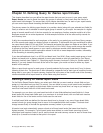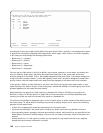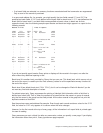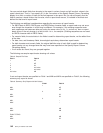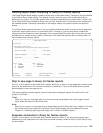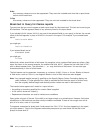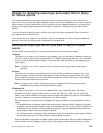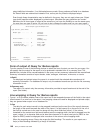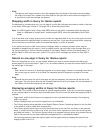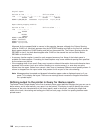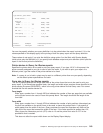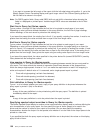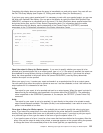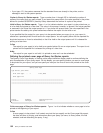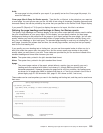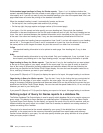N=No
The data for each output record is not to be wrapped when the length of the output record exceeds
the width of the report line. Instead, any extra fields on the right end of each record are dropped. If N
is specified, the next two prompts are ignored.
Wrapping width in Query for iSeries reports
For displayed or printed output only, you can specify a value that indicates the maximum width of the lines
in the report. Either type a value of 1 through 378 or leave this prompt blank.
Note: For DBCS-graphic fields, Query adds DBCS shift-out and shift-in characters before showing the
fields in a displayed or printed report. Variable-length DBCS values are extended to the full field
length.
If all of the fields of an output record cannot fit within the specified width of one line of the report, the field
that would exceed the specified width is started on the next line. If you leave this prompt blank, wrapping
occurs whenever the maximum width of the specified display, or printer is reached.
If you specify too small a width, some column headings, fields, or summary function values may be
truncated or dropped from the report. If such a problem occurs, you can either make changes here or to
the Column Spacing or Column Heading prompts on the Specify Report Column Formatting display. To
see the fields in which this may occur, press F13 (Layout). Error messages are shown for each field in
error.
Record on one page in Query for iSeries reports
When line wrapping can occur, you can specify whether you want to prevent records from being split
across pages of your printed report. Type a Y or N to indicate whether you want all of each record to be on
the same page in the report.
Y=Yes
Each record is to have all its fields kept together on the same page. If there is not enough room left on
the current page to contain all of its fields, the complete record is displayed or printed on the next
page.
N=No
Records that start near the end of one page are split as necessary and continued at the top of the
next page. The split occurs after the last complete field that fits on the full page, with the remainder of
the fields in the record continued on the next page.
Displaying wrapping widths in Query for iSeries reports
You can use F13 (Layout) to show the effect of various wrapping widths. If you do, you see that wrapping
is not a simple matter of continuing each formatted report line on the next line when the wrapping width is
reached:
v Page, break, and final text lines are not wrapped, and are truncated without warning if the wrapping
width is too small.
v Column headings wrap as a band of aligned lines, not individually.
v The Column spacing value specified on the Specify Report Column Formatting display for the first field
in the output is used to indent each wrapped line.
v The Column spacing value may or may not be carried over to the next line, as shown in the example
below. If a field cannot fit on the end of a line, all of that field is carried over to the next line along with
any fields that follow it. The Column Spacing value for a wrapped field may show up as blanks after the
field on the previous line, as blanks before the wrapped field, or a combination thereof.
The following example shows the original report and the report showing wrapping that occurs if the
wrapping width is set to 15.
Chapter 13. Selecting output type and output form in Query for iSeries reports 147
|
|
|
|



